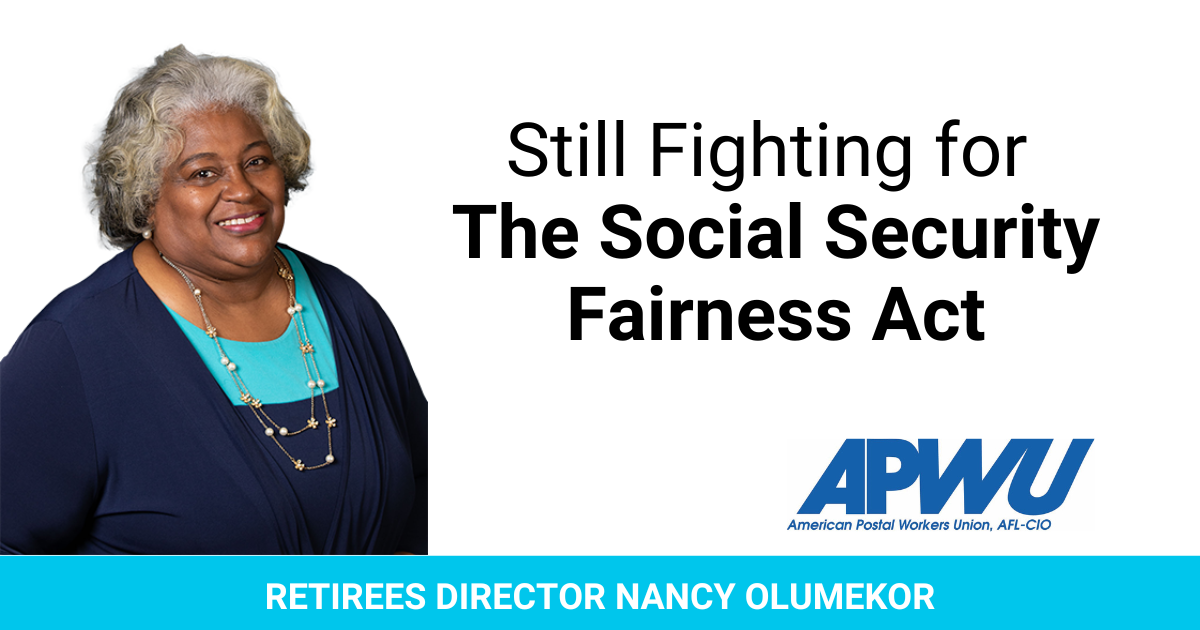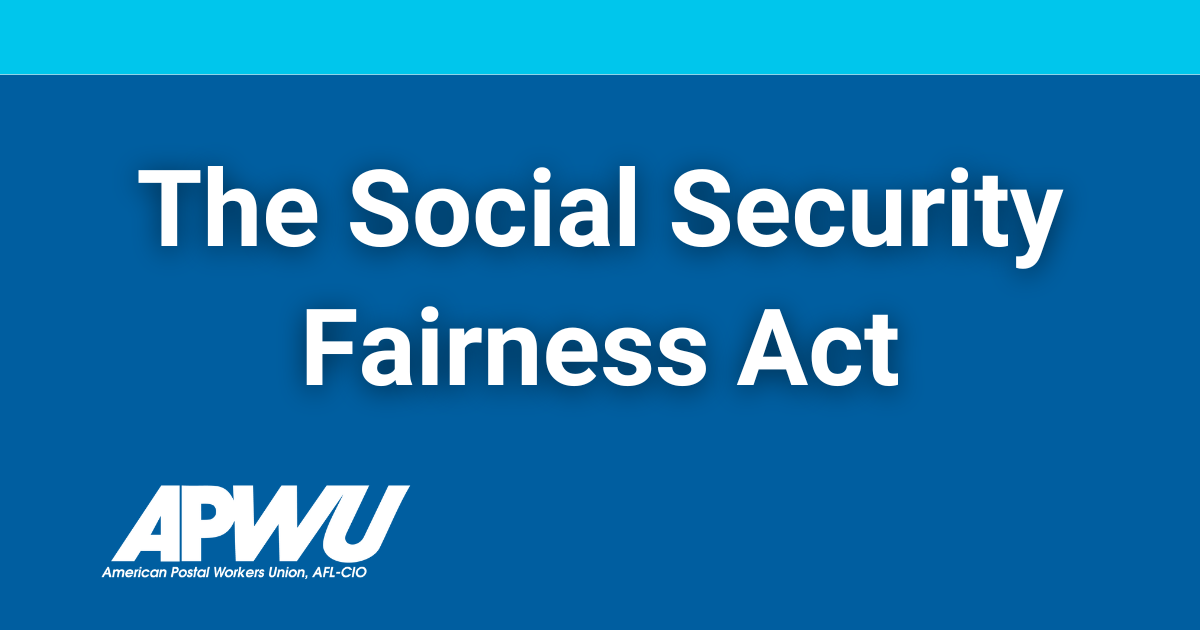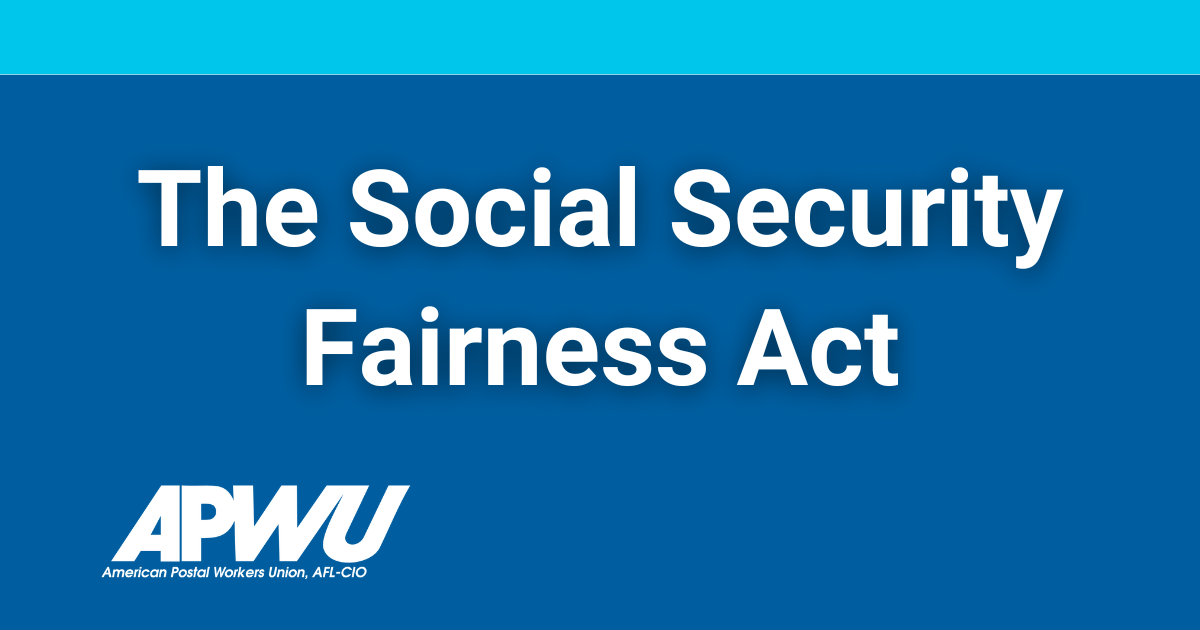CWA Statement Regarding Passage of the Social Security Fairness Act: This statement delves into the Communication Workers of America’s official position on the recently passed Social Security Fairness Act, analyzing its potential impact on workers’ retirement security and comparing the CWA’s stance with other advocacy groups. We explore the key arguments for and against the Act, examining both immediate and long-term consequences for CWA members and the broader Social Security system.
The analysis includes a detailed look at projected economic effects and potential solutions proposed by the CWA.
The CWA’s comprehensive statement provides a detailed breakdown of the act’s potential implications, considering its effect on various demographics within the CWA membership, including public sector workers. The analysis goes beyond a simple pro or con assessment, offering a nuanced perspective that weighs the potential benefits against the risks and outlining potential collaborative efforts with other advocacy groups.
CWA Statement on the Social Security Fairness Act

The Communication Workers of America (CWA) has issued a statement regarding the passage of the Social Security Fairness Act, outlining its position, concerns, and proposed solutions. This analysis delves into the CWA’s official stance, its impact on workers, comparisons with other advocacy groups, long-term implications, and a visual representation of key data.
CWA’s Official Position on the Social Security Fairness Act
The CWA’s statement expresses strong support for the Social Security Fairness Act, highlighting its potential to improve retirement security for millions of Americans. Key arguments focus on rectifying inequities in the current system, particularly for public sector workers and those who have dedicated their careers to public service. The CWA advocates for the elimination of the Windfall Elimination Provision (WEP) and the Government Pension Offset (GPO), which currently reduce Social Security benefits for many retirees who have also contributed to public pension systems.
The union proposes these changes as crucial steps towards ensuring fair and adequate retirement benefits for all workers.
Impact on Workers’ Retirement Security

The Act’s passage is expected to significantly improve retirement security for CWA members, particularly those affected by the WEP and GPO. The elimination of these provisions would provide a substantial boost to their monthly Social Security benefits, easing financial burdens during retirement. The impact would vary among different demographics within the CWA membership; public sector workers, for instance, stand to gain more significantly than those solely reliant on Social Security.
The CWA statement applauds the passage of the Social Security Fairness Act, a significant victory for fairness and equity. This positive news contrasts sharply with the somewhat less positive outcome for Crystal Palace, as evidenced by their resounding defeat in the Crystal Palace 1 – 5 Arsenal – Match Report. However, the CWA remains focused on its advocacy efforts, continuing to push for legislative improvements impacting workers’ rights and social security.
For example, a public school teacher who also contributed to a state pension system would see a considerable increase in their Social Security income after the WEP is removed. The economic consequences for CWA members would be positive, allowing for a more comfortable and secure retirement.
Comparison with Other Advocacy Groups’ Statements
The CWA’s support for the Social Security Fairness Act aligns with the positions of numerous other labor unions and advocacy groups. However, there are nuances in the approaches and priorities. While many groups share the goal of eliminating the WEP and GPO, there might be differences in the emphasis placed on specific aspects of the Act or in their suggested strategies for achieving broader Social Security reform.
The CWA’s statement celebrating the Social Security Fairness Act’s passage highlights a significant victory for workers. It’s a stark contrast to the headline-grabbing achievements of others, like the incredible feat detailed in this article: ‘Just ridiculous’: 19yo phenom destroys Aussie… and is on path to. However, both stories underscore the importance of fighting for what you believe in, whether it’s social security reform or athletic excellence.
The CWA’s success reinforces the power of collective action for positive change.
| Organization | Stance on WEP/GPO | Focus on Additional Reforms | Proposed Solutions |
|---|---|---|---|
| CWA | Strong support for elimination | Fair and adequate retirement benefits for all | Legislative action, advocacy |
| AFL-CIO | Strong support for elimination | Broader Social Security reform | Legislative action, public awareness campaigns |
| AARP | Strong support for elimination | Protecting benefits for current and future retirees | Legislative advocacy, public education |
Long-Term Implications of the Social Security Fairness Act, CWA Statement Regarding Passage of the Social Security Fairness
The CWA anticipates that the long-term effects of the Act will be positive, contributing to the financial well-being of retirees and promoting the overall sustainability of the Social Security system. However, the union acknowledges that addressing the long-term solvency of Social Security requires a comprehensive approach beyond the scope of this specific Act. The CWA believes the Act’s impact on future generations will be beneficial, ensuring a fairer and more equitable system for all workers.
- Short-term (1-5 years): Increased benefits for affected retirees, leading to improved financial security.
- Mid-term (5-15 years): Gradual adjustment to the new benefit calculations, potential for reduced strain on other social safety nets.
- Long-term (15+ years): Improved public perception of Social Security, potential for increased workforce participation due to enhanced retirement security.
Visual Representation of Key Arguments

A bar graph could effectively illustrate the CWA’s key arguments. The graph would compare the average monthly Social Security benefits of CWA members affected by the WEP and GPO before and after the Act’s implementation. The x-axis would represent different worker demographics (e.g., public sector, private sector), while the y-axis would show the monthly benefit amounts. Data for the “before” scenario would be derived from current Social Security benefit calculations, while the “after” scenario would reflect the projected benefits after the elimination of the WEP and GPO.
The difference between the two bars for each demographic would clearly highlight the significant positive impact of the Act on CWA members’ retirement security. The methodology would involve analyzing existing Social Security benefit calculation formulas and applying the changes introduced by the Act to project future benefit amounts. Data sources would include the Social Security Administration’s public data and CWA’s internal membership data (with appropriate anonymization and aggregation to protect member privacy).
In conclusion, the CWA’s statement on the Social Security Fairness Act offers a vital perspective on the legislation’s potential ramifications. By examining the act’s impact across different demographics within its membership and comparing its stance with other organizations, the CWA provides a robust and comprehensive analysis. The long-term implications, including potential effects on Social Security funding and future generations, are carefully considered, highlighting the need for ongoing dialogue and collaboration to ensure the long-term health and sustainability of the Social Security system.
The CWA’s proactive approach encourages a broader conversation about the future of retirement security in the United States.
FAQ: CWA Statement Regarding Passage Of The Social Security Fairness
What specific concerns does the CWA have about the Social Security Fairness Act?
The CWA’s specific concerns would need to be detailed in the full statement, but may include issues such as funding mechanisms, potential impact on specific member groups, and long-term solvency of the system.
How does the CWA’s position compare to that of AARP?
A comparison with AARP’s position would require a detailed analysis of both organizations’ statements. The full statement would need to include this comparative analysis.
What visual aids are used to illustrate the CWA’s key arguments?
The full statement should include a description of the visual representation (e.g., chart or graph) used to illustrate the CWA’s key arguments. The description should include data sources and methodology.
